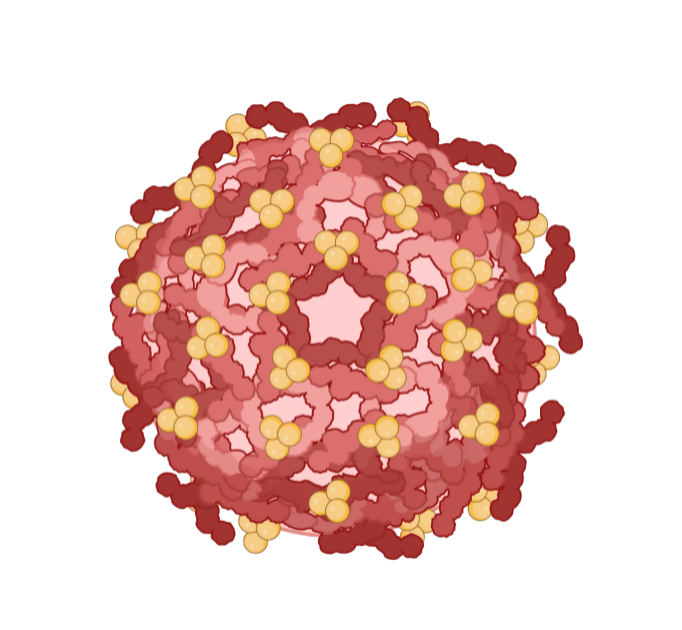Antiviral drug screening is a systematic project aimed at discovering drugs that can effectively inhibit virus replication, alleviate virus symptoms, or prevent virus transmission. The following is a general antiviral drug screening process:
1、 Determine screening targets and criteria
Screening objective: Based on the severity of the disease, the characteristics of the virus, and market demand, identify the types of antiviral drugs that need to be screened and their expected targets of action.
Screening criteria: Develop clear screening criteria, including requirements for antiviral activity, cytotoxicity, drug stability, metabolic characteristics, safety, and production costs.
2、 Sample preparation and compound library construction
Sample source: Select samples from natural product and synthetic compound libraries, or modify the structure of known drugs to obtain potential phenological candidates for antiviral drugs.
Compound library construction: Construct a compound library containing diverse chemical structures to ensure that the compounds in the library have a wide range of chemical diversity and potential pharmacological activities.
3、 Experimental design and selection of screening models
Screening model: Select appropriate cell lines and virus infection models based on the target virus. Cell lines should be easy to cultivate, sensitive to viruses, and able to reflect the biological characteristics of viral infection.
Experimental design: Design a reasonable experimental plan, including the setting of drug concentration gradient, selection of treatment time, establishment of control group, etc., to ensure the accuracy and reliability of screening results.
4、 Initial screening and re screening
Initial screening: Using high-throughput screening technology (HTS) to conduct preliminary screening of compounds in the compound library. Quickly identify candidate drugs with potential antiviral activity through automated equipment and data analysis software.
Re screening: Further validation and screening of candidate drugs in the initial screening results. By adjusting drug concentration, processing time, and other conditions, observe the inhibitory effect of drugs on virus replication, and evaluate the cytotoxicity of drugs. At the same time, multiple detection methods (such as virus titer determination, PCR detection, immunofluorescence staining, etc.) can be used to comprehensively evaluate the antiviral activity of candidate drugs.
5、 Pharmacodynamic evaluation and mechanism of action research
Antiviral activity assay: Multiple methods are used to quantitatively evaluate the antiviral activity of candidate drugs, such as calculating parameters such as half maximal inhibitory concentration (IC50).
Mechanism of action research: Conduct in-depth research on the effects of candidate drugs on different stages of the virus replication cycle, and clarify their mechanism of action. This helps to understand the antiviral effects of drugs and provides guidance for subsequent drug optimization.
6、 Safety and toxicity assessment
Cell toxicity testing: Evaluate the toxic effects of candidate drugs on host cells in vitro experiments, calculate parameters such as the half toxic concentration (CC50).
Animal experiments: Conduct safety assessments in animal models, observe the metabolism, distribution, and excretion of candidate drugs in vivo, as well as their effects on animal physiological indicators. This helps predict the safety risks of drugs in the human body.
7、 Preclinical research and clinical trials
Preclinical research: Prior to entering clinical trials, necessary toxicology, pharmacokinetic, and other studies are conducted to evaluate the safety, efficacy, and pharmacokinetic properties of the drug.
Clinical trial: Design a reasonable clinical trial plan based on preclinical research results to evaluate the safety, efficacy, and pharmacokinetic properties of candidate drugs in humans. Clinical trials are usually conducted in multiple stages, including Phase I, Phase II, and Phase III clinical trials.
8、 Result analysis and drug optimization
Data analysis: Organize, classify, and analyze the data generated from screening experiments and clinical trials. Using statistical methods to process data and determine the antiviral effect and mechanism of action of drugs against viruses.
Drug optimization: Based on screening results and pharmacological evaluation, candidate drugs are structurally optimized and improved to enhance their antiviral activity and reduce cytotoxicity. Simultaneously consider factors such as the production cost and market prospects of the drug for comprehensive evaluation.
9、 Registration and Listing
After completing all necessary clinical trials and obtaining regulatory approval, the drug can apply for registration and be marketed for sale. During the listing process, it is necessary to comply with relevant laws, regulations, and provisions to ensure the quality and safety of the drug.
In short, antiviral drug screening is a complex and systematic process that requires interdisciplinary collaboration and strict quality control to ensure the accuracy and reliability of screening results.


